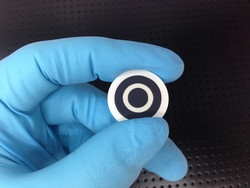Innovative three-electrode fuel cell
Solid oxide fuel cells (SOFCs) produce electricity by oxidising hydrocarbon fuels such as natural gas or biofuel. Composed of an anode and a cathode made of solid oxide or ceramic electrolytes, SOFCs operate at extremely high temperatures. Scientists have encountered many challenges and engineering problems such as carbon deposition and sulphur poisoning of the anode during their development. Despite intensive research, no major technological breakthroughs have been realised so far with respect to robust operation of SOFCs. To address these issues, scientists of the EU-funded T-CELL(opens in new window) (Innovative SOFC architecture based on triode operation) proposed an innovative SOFC design that relies on a novel, triode architecture. The idea was to combine tolerant materials with a cell design that permits the effective in-situ control of electrocatalytic activity under extreme conditions. Researchers applied modified nickel (Ni)-based materials, known for their tolerance as anodic electrodes in SOFCs together with other metals. The triode configuration essentially introduced a third electrode driven by an auxiliary circuit to operate the anode and cathode. A detailed mathematical model was introduced to account for all the electrochemical processes taking place within the triode cell. The T-CELL radical design nearly halved the carbon deposition rate on standard Ni anodes and increased the cell operational lifetime. It also enhanced the SOFCs power output and overall electrical efficiency. The activities of the project culminated in the development and testing of a prototype triode device consisting of five repeating units. Commercial exploitation of the T-CELL design is expected to reduce energy dependence on fossil fuels and lead to reduction in greenhouse gas emissions. Long term, this will translate into a qualitative improvement of the environment and public health.







